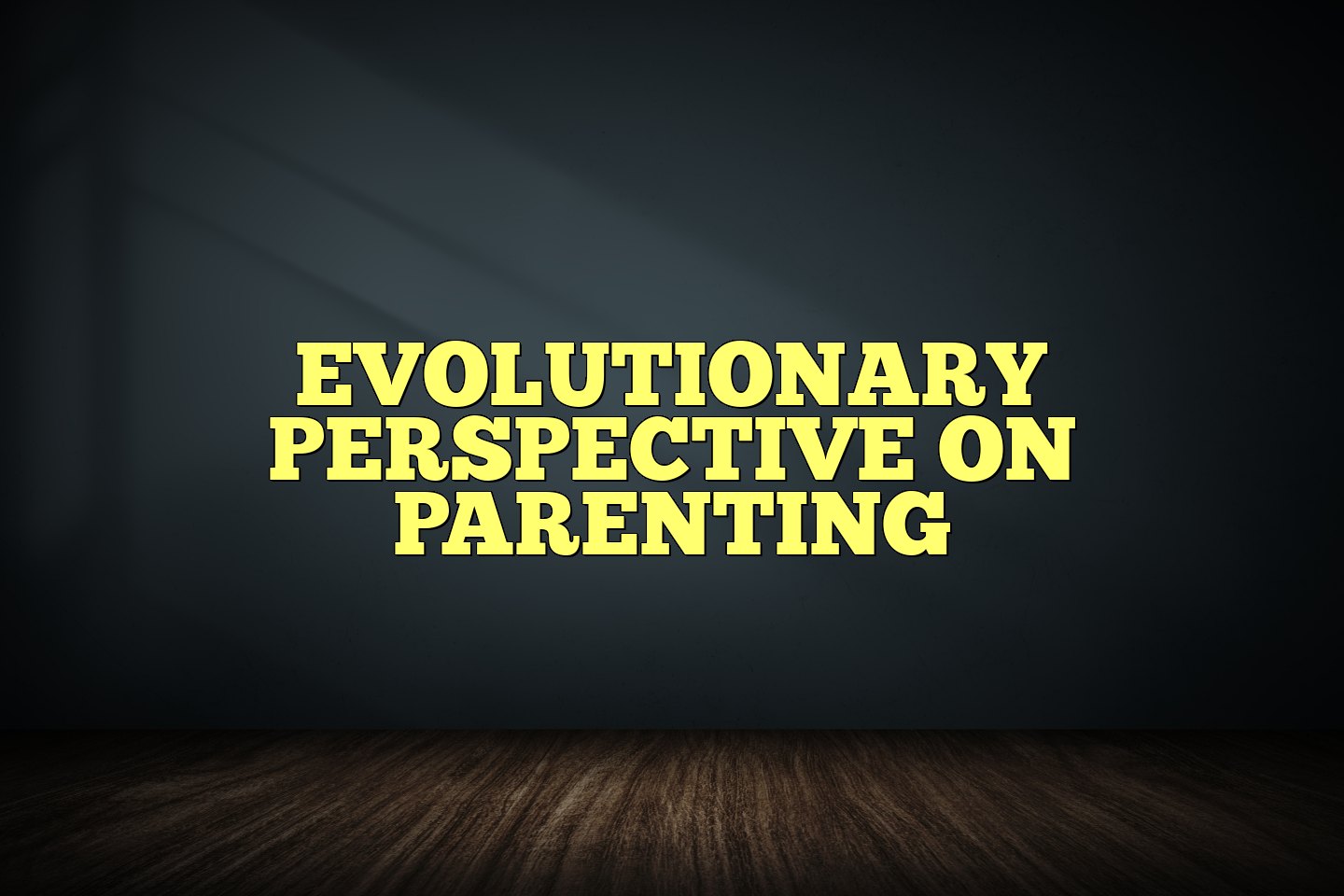The evolutionary perspective on parenting is a theory that seeks to explain why certain parental behaviors and strategies have evolved and how they contribute to the survival and reproductive success of offspring. This perspective suggests that parenting behaviors and strategies have been shaped by natural selection, with the ultimate goal of ensuring the survival and reproduction of genes. In this view, parental behaviors and strategies are seen as adaptive responses to the challenges and demands of the environment. Therefore, understanding the evolutionary perspective on parenting can provide insight into the factors that influence parental behavior and the strategies they use to raise their children. In this essay, we will explore the evolutionary perspective on parenting and examine how it shapes parental behavior and strategies.

Reproduction is costly. Individuals are limited in the degree to which they can devote time and resources to producing and raising their young, and such expenditure may also be detrimental to their future condition, survival and further reproductive output. Parental investment is any parental expenditure (time, energy etc.) that benefits one offspring at a cost to parents’ ability to invest in other components of fitness (Clutton-Brock 1991: 9; Trivers 1972). Components of fitness (Beatty 1992) include the well being of existing offspring, parents’ future reproduction, and inclusive fitness through aid to kin (Hamilton, 1964). Parental investment theory is a branch of life history theory.
Robert Trivers’ theory of parental investment predicts that the sex making the largest investment in lactation, nurturing and protecting offspring will be more discriminating in mating and that the sex that invests less in offspring will compete for access to the higher investing sex (see Bateman’s principle). Sex differences in parental effort are important in determining the strength of sexual selection.
The benefits of parental investment to the offspring are large and are associated with the effects on condition, growth, survival and ultimately, on reproductive success of the offspring. However, these benefits can come at the cost of parent’s ability to reproduce in the future e.g. through the increased risk of injury when defending offspring against predators, the loss of mating opportunities whilst rearing offspring and an increase in the time to the next reproduction. Overall, parents are selected to maximise the difference between the benefits and the costs, and parental care will be likely to evolve when the benefits exceed the costs.
The Cinderella effect is a term used to describe the high incidence of stepchildren being physically, emotionally or sexually abused, neglected or murdered, or otherwise mistreated at the hands of their stepparents at significantly higher rates than their genetic counterparts. It takes its name from the fairy tale character Cinderella, who in the story was cruelly mistreated by her stepmother and stepsisters. Daly and Wilson (1996) noted: “Evolutionary thinking led to the discovery of the most important risk factor for child homicide — the presence of a stepparents. Parental efforts and investments are valuable resources, and selection favors those parental psyches that allocate effort effectively to promote fitness. The adaptive problems that challenge parental decision making include both the accurate identification of one’s offspring and the allocation of one’s resources among them with sensitivity to their needs and abilities to convert parental investment into fitness increments…. Stepchildren were seldom or never so valuable to one’s expected fitness as one’s own offspring would be, and those parental psyches that were easily parasitized by just any appealing youngster must always have incurred a selective disadvantage”(Daly & Wilson, 1996, p64 – 65). However, they note that that not all stepparents will “want” to abuse their partner’s children, or that genetic parenthood is absolute insurance against abuse. They see step parental care is as primarily “mating effort” towards the genetic parent.